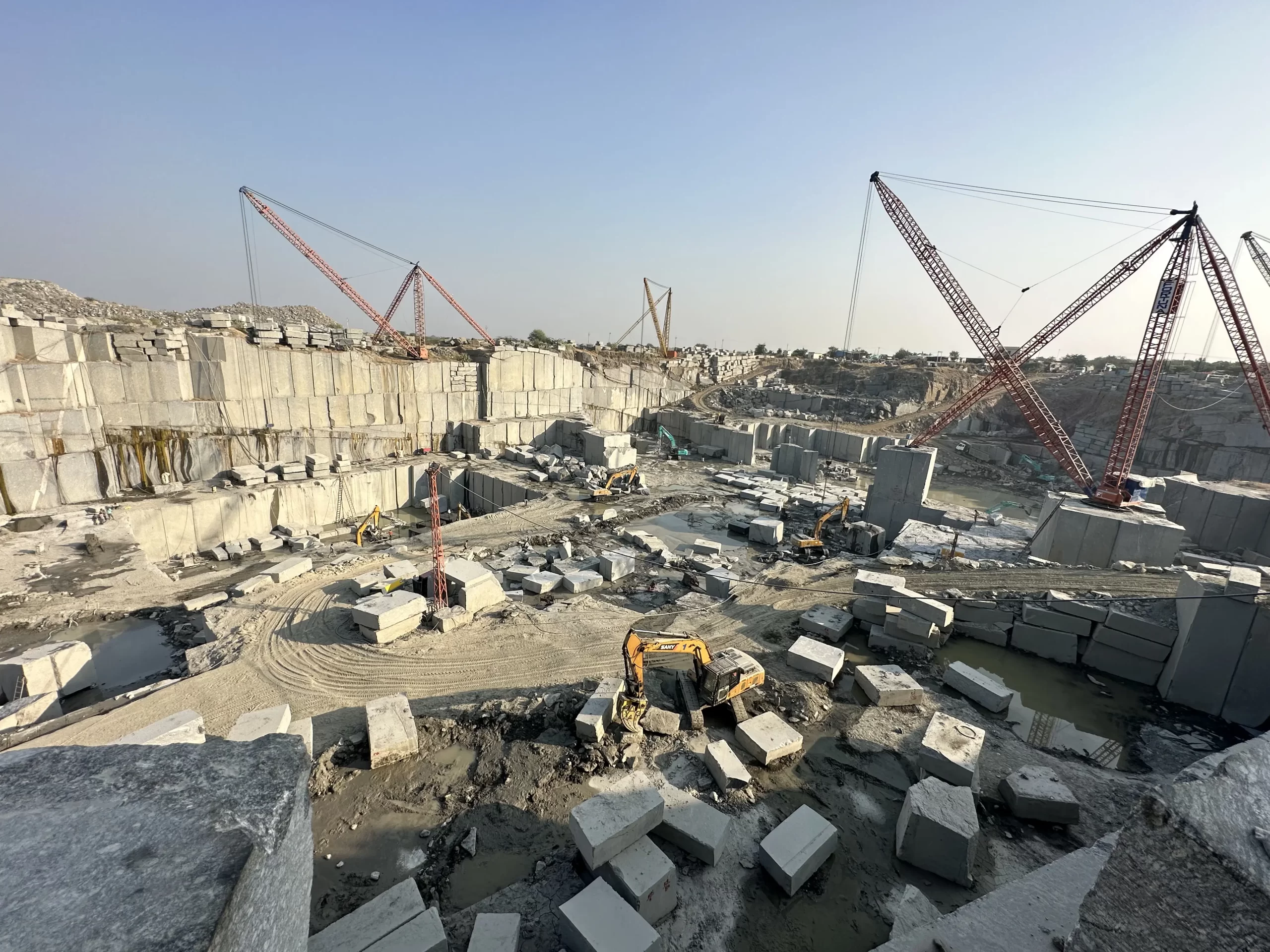Uncovering the Rich History and Lasting Practices of Granite Quarrying
As we base on the precipice of revealing the elaborate tapestry of granite quarrying, a trip with time discloses not just the physical act of removing stone however additionally the cultural and historical significance woven into the really fabric of this method. From the old origins that laid the foundation for contemporary quarrying strategies to the sustainable methods that are forming the future of this industry, each sculpt mark on granite surface areas informs a story waiting to be discovered (granite quarries in south africa). The heritage of granite quarrying stretches much past simple extraction; it is a testimony to human resourcefulness, resilience, and the enduring attraction of this stunning rock
Old Origins of Granite Quarrying
Dating back to ancient worlds, the technique of quarrying granite has actually been an essential component of human background and building innovation. The earliest proof of granite quarrying dates back to ancient Egypt, where enormous pyramids and detailed sculptures were crafted from this durable stone. The Egyptians utilized primitive tools to draw out granite blocks from quarries, showcasing the relevance of this product in their monumental constructions.
Progressing in background, the Greeks additionally made significant contributions to the quarrying of granite. The Greeks used granite in various building marvels, such as holy places and statuaries, demonstrating their skill in shaping and carving this hardy stone. The Romans additionally fine-tuned the strategies of quarrying granite, using advanced devices like blades and hammers to essence and shape granite for their iconic frameworks.
Via the centuries, the technique of quarrying granite has actually advanced, with contemporary technologies improving effectiveness while preserving the ageless charm of this all-natural rock - granite quarries in south africa. From ancient worlds to contemporary home builders, the tradition of granite quarrying continues to shape our globe
Development of Quarrying Methods
The evolution of quarrying techniques has actually been marked by a constant progression in the direction of better effectiveness and precision in extracting granite. From the simple techniques employed by our ancestors to the innovative innovations used in modern-day quarrying operations, the market has undertaken considerable developments. Early quarrying techniques entailed manual work with standard tools such as chisels, hammers, and wedges to draw out granite blocks from the earth. As human beings progressed, strategies like fire-setting and primitive dynamites were introduced to promote the extraction procedure.
Advancements in computer-controlled devices and 3D modeling have actually enhanced quarrying procedures, leading to marginal ecological influence and boosted sustainability techniques. As the need for granite proceeds to climb, the advancement of quarrying strategies remains essential to meeting market needs effectively and sustainably.
Cultural Significance of Granite
Granite holds an extensive social relevance throughout different human beings as a result of its long-lasting visibility in architectural work of arts and admired monuments. From the magnificent pyramids of Egypt to the detailed makings of the Angkor Wat holy place in Cambodia, granite has actually been a product of choice for expressing splendour and durability in social heritage. In old Rome, granite columns decorated holy places and public structures, representing toughness and durability. The social significance of granite extends past its physical qualities; it symbolizes resilience, security, and timelessness, making it an icon of withstanding legacies and practices.

Lasting Practices in Quarrying
Among the abundant history of granite quarrying and its social value lies a growing focus on sustainable practices within the sector. As ecological understanding and concerns concerning source depletion have actually increased internationally, the quarrying industry has Learn More Here increasingly welcomed lasting techniques to minimize its effect on the atmosphere and bordering neighborhoods.

Furthermore, improvement and rehab of quarry websites post-extraction are important to lasting methods. By bring back quarried locations to an all-natural or helpful state, such as developing wild animals environments or entertainment rooms, quarriers can counter the ecological impact of their operations and contribute favorably to the regional environment.
Tradition of Granite Quarrying
With a historical backdrop steeped in craftsmanship and industrial progress, what sustaining influence has granite quarrying left on the landscape of modern-day culture? The tradition of granite quarrying goes beyond simple removal methods; it has shaped architectural marvels, city landscapes, and social heritage worldwide. The sturdy nature of granite has actually made it a recommended option for monuments, buildings, and infrastructure, standing as a testament to the skill and creativity of quarry workers throughout generations.
In addition, the financial footprint of granite quarrying can not be forgotten. The industry continues to supply work chances and drive local economic climates in areas where granite extraction is common. It has additionally spurred technical advancements in quarrying strategies and equipment, resulting in extra reliable and lasting techniques.
In terms of sustainability, the tradition of my company granite quarrying you could try these out consists of efforts to minimize ecological influences through improvement tasks and responsible resource monitoring. By stabilizing economic rate of interests with ecological stewardship, the sector strives to make sure that future generations can remain to gain from this enduring natural source.
Verdict

Comments on “The Surprise Treasures: Discovering Granite Quarries in South Africa”